Sourdough bread is made with a sourdough starter in place of commercial yeast, which is simply flour and water that has been naturally fermented. Besides the flavor and texture this adds, it is easier to digest and offers many health benefits that commercial yeast does not.
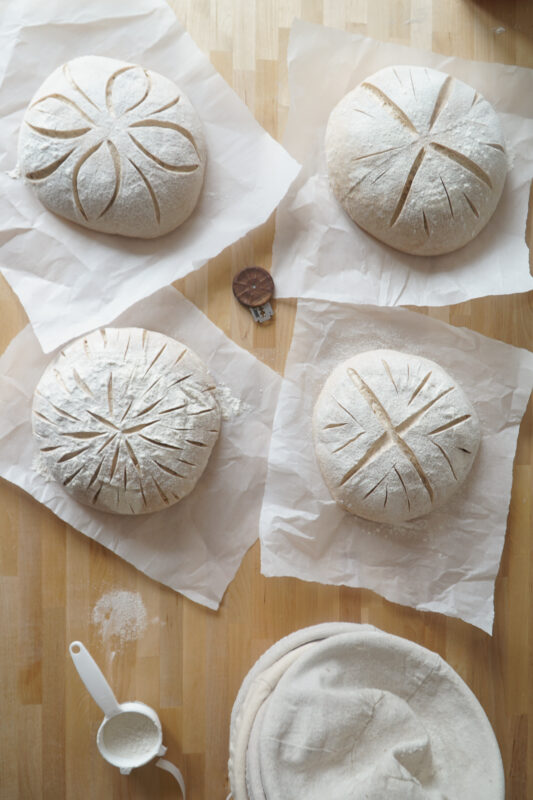
In this beginner’s guide, you’ll learn all about it – the starter, how to make it, and the health benefits. Plus, I’ll answer lots of questions people have asked about sourdough bread.
What Is Sourdough
As they say, let’s start at the very beginning.
Simply put, the term sourdough describes any kind of baked goods that are made with fermented yeast, AKA sourdough starter, not commercial yeast. The fermented yeast is what gives all sourdough the unique health benefits.
When most people hear the term sourdough, they instantly think of a round, rustic loaf of bread. That is probably because sourdough bread is so easy that it’s the most common thing people make with the starter.
Sourdough bread is the most basic of breads, made from just three ingredients: flour, water, and salt. From that basic combo, you can make sourdough bread with different types of flour and enhance it in various ways, including fresh and/or dried herbs, fruits, nuts, and seeds.
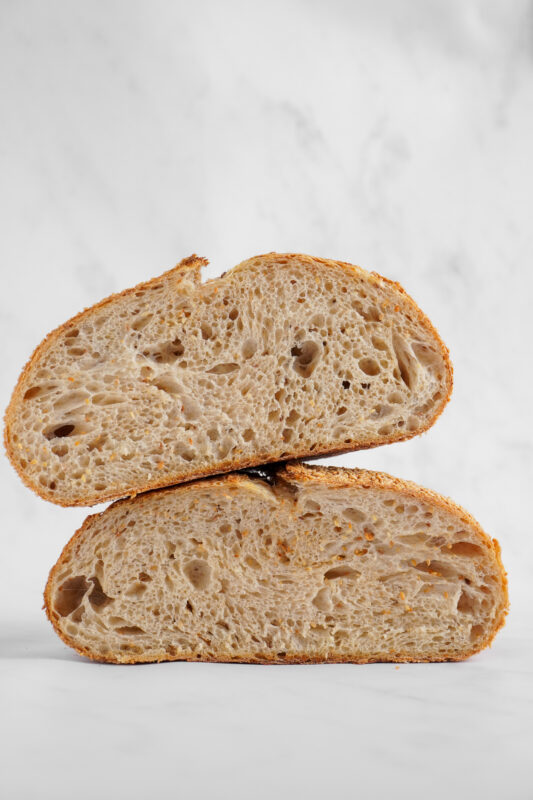
But even a loaf made with only the flour, water, and salt found in the most minimally stocked kitchen is something to savor. And that’s due to the one essential difference between sourdough and “regular” bread: yeast.
Most bread is made with commercially manufactured yeast, which, while convenient, doesn’t contain many health benefits. Sourdough bread, on the other hand, is leavened with natural yeast – aka sourdough starter.
The natural yeasts that leaven sourdough bread are found in a starter- a simple mixture of flour and water that ferments for several weeks. During this fermentation process, many of the health benefits inherent to sourdough are developed.
Want to learn more about sourdough starter? Read my complete guide to making and feeding starter at home. It goes into what starter is, how to make it, and how to use it for the first time (and beyond).
Now that you know what sourdough is, let’s look closer at the starter, the basis of this healthy, tasty bread.
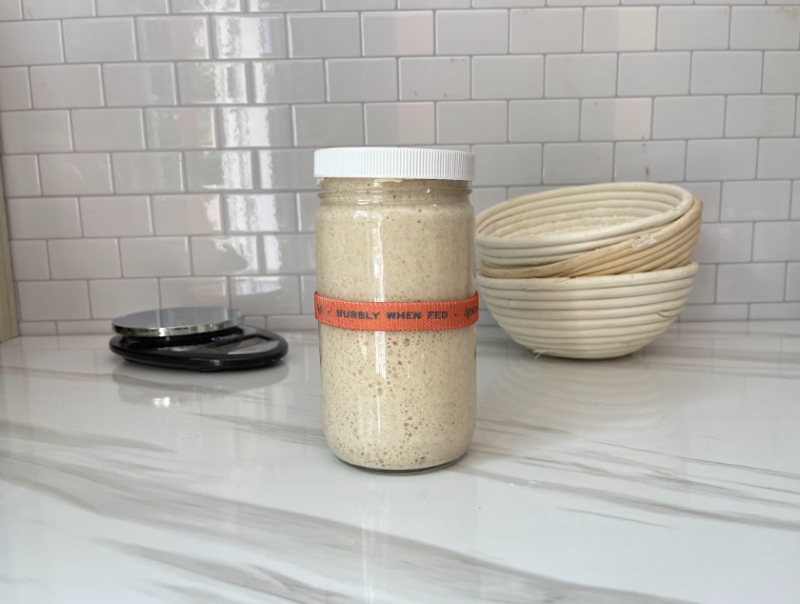
How Is Sourdough Different From Other Bread
What is the difference between sourdough bread and regular bread?
Lots of bread recipes give you crispy, rustic bread, right? So what makes this type of bread so different?
The starter is what makes sourdough so unique. Since this type of bread is made with fermented flour instead of commercial yeast, it will have a unique flavor.
It also has an interior crumb with soft holes surrounded by a crispy crust.
The taste, exterior, and interior of sourdough are all thanks to the starter – and the starter is also what makes this bread so good for you.
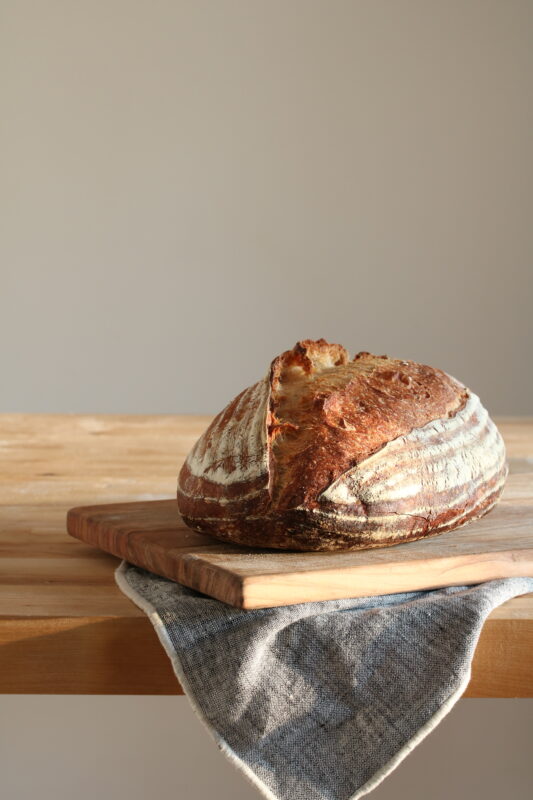
Health Benefits
Sourdough bread is incredibly healthy for you. It’s easier to digest and doesn’t affect your blood sugar as much as regular bread. This is all due to the fermentation from the starter.
People ask all the time, “is the sourdough starter fermented, or is the dough fermented?” It’s a good question, and the answer is, both!
The starter is obviously fermented. When you add it to the dough, it begins to break down the gluten and ferment the bread. So, yes, the dough does begin to ferment.
During fermentation, the phytic acid and gluten in the flour break down, enabling healthy minerals like vitamin K to flourish and promoting the growth of beneficial bacteria like lactobacilli, which support intestinal health.
Keep in mind that baking the bread kills the lactobacilli, but that’s ok because the lactobacilli already broke down the gluten. It does its job before you bake it, making the nutrients more readily available. Plus, thanks to the lactobacilli’s job earlier, your body doesn’t have to break down the gluten anymore.
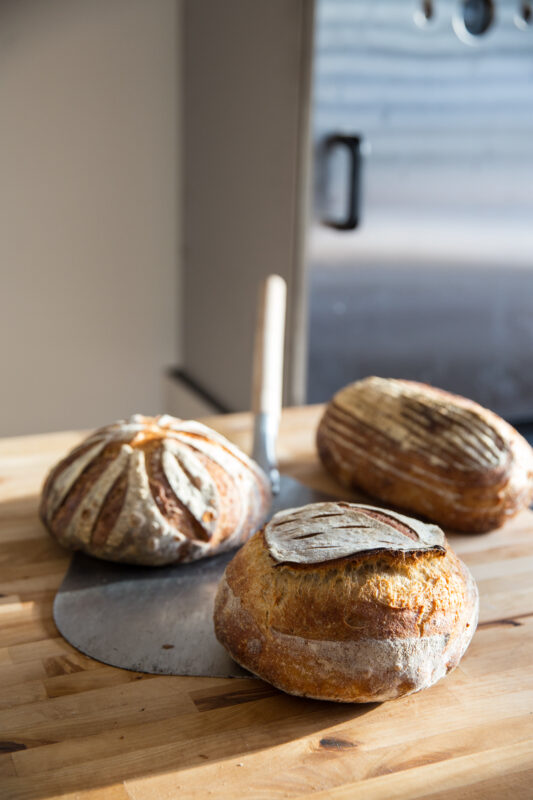
It’s also better for your blood sugar than commercial bread. It doesn’t cause big spikes or dips. Instead, it’s known for stabilizing your blood sugar and supporting natural energy.
In fact, a study released showed that it helps unlock B vitamins, making them easier to use and digest. These are the vitamins responsible for natural energy production.
That fermentation process from the starter also helps develop the nuanced flavor commonly associated with sourdough. In short, it’s natural yeast that gives sourdough its oft-touted health benefits- and it’s what makes it taste so good, too.
The fermentation is also why many people think it’s gluten-free, even though it’s not. Since it breaks down the gluten, people with gluten sensitivities can digest it easier than other types of bread.
After you bake your first loaf, you’ll fall in love with how it tastes and how good it makes you feel.
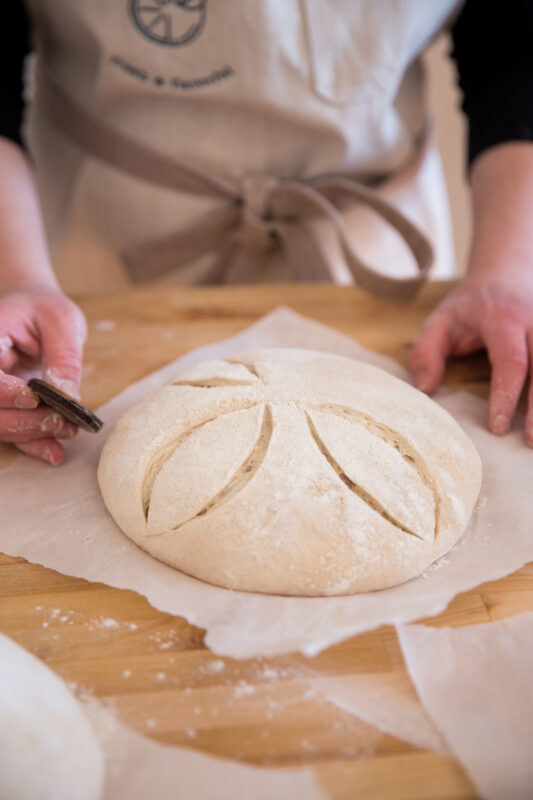
Is sourdough gluten-free?
No, sourdough is not gluten-free. It’s made with wheat flour, which has gluten in it. People think it’s gluten-free because many who are sensitive to gluten can eat it.
Why can gluten-senstive people eat sourdough? Because the starter breaks down the phytic acid and gluten in the dough. Now the body doesn’t have to work so hard to digest all that gluten.
It’s one of the most popular reasons people enjoy eating it!
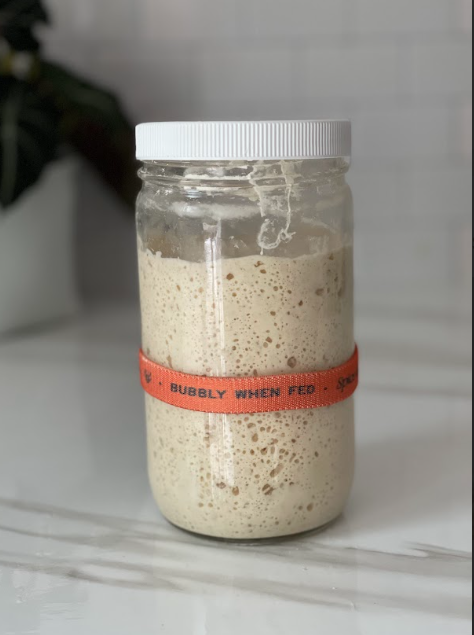
What Is Sourdough Starter
The starter is the basis of this bread. It goes by many names, such as wild yeast, live culture, or levain. To keep things simple, I will mostly call it a starter.
The starter is made from flour and water. As the flour ferments with the water, it cultivates the wild yeast and bacteria that naturally occurs in flour.
It only takes a small amount of starter to help an entire loaf to rise.
The starter is the heart of every loaf of sourdough bread.
How To Care For Your Starter At Home
After you perfect your starter recipe, it’s essential to take care of it so that you can keep using it over and over again. When you add more flour and water to the starter, this is called feeding the starter.
How often and how much you feed your starter depends on where it is stored and how quickly you want to use it to bake your bread.
So, learn more in my sourdough starter guide. It breaks down the differences between daily feeds and weekly and how to know the ratios of flour to water.
Now that you know what the starter is, let’s look at how to make your first loaf of sourdough bread.
Are you ready to start baking? I have a sourdough recipe that is tried and true. This no-fuss method works like a charm!
Go follow and print my easy sourdough recipe and enjoy a tasty loaf of homemade bread.
Why Bake Sourdough Bread At Home
Doesn’t that sound easy? If you’ve been tempted to bake some at home, give it a try.
Baking nourishing bread is one of the most important ways to nurture your family’s health. Nothing beats the feeling of love that goes into each loaf, knowing it’s easy on their tummies.
What if you’re not exactly a baker? Or you don’t like spending too much time in the kitchen? That’s another reason to make sourdough. You can skip many steps (like the stretch and fold) and still make stupid-easy bread that’s good for your family.
The only skills you need are measuring and mixing. That’s it! In no time, your kitchen will fill with tantalizing aromas of fresh bread.
That’s the magic of sourdough! It gives you the joy of fresh, healthy bread without too much effort.
Plus, why drive to the store and deal with grumpy crowds when fresh, homemade bread is this easy to make?
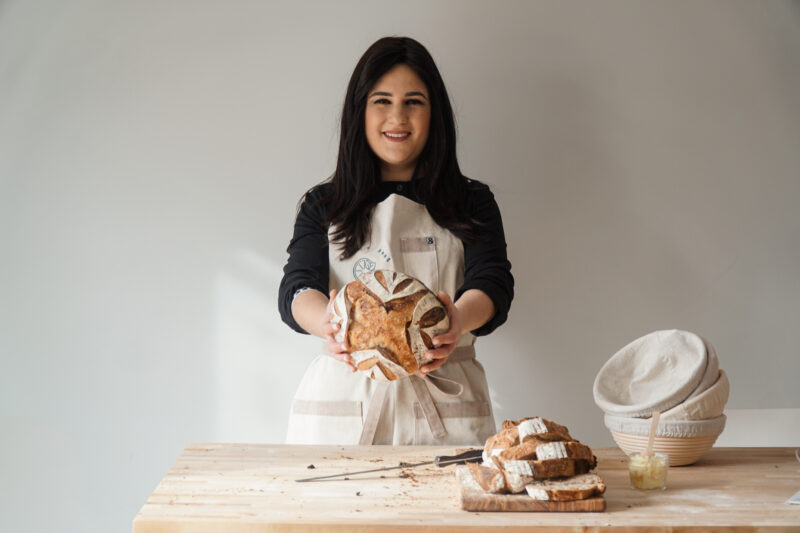
How I Fell In Love With Sourdough
I fell in love with the simplicity and joy of sourdough a decade ago. When we were changing our lifestyle to healthy eating, I began to experiment with sourdough. In those days, we didn’t have the abundance of books, courses, and resources we have today. So, learning to bake good bread came with a lot of trial and error, almost on my own.
As my love for sourdough grew, so did my experiments. It wasn’t long before anything I baked used my starter, including rolls and pita chips. And the best part was that it was healthy for my family.
At first, all my friends wanted to share a loaf. But as time went on, people became more and more interested in learning to bake this themselves. So, three years into my baking journey, I started to teach sourdough baking. And I’m thrilled to share this knowledge with you, too.
Final Thoughts
There you have it – everything you wanted to know about sourdough bread! It’s one of the easiest and healthiest types of bread you can bake. Once you bake your first loaf, you’ll be hooked!
While the most popular way to bake sourdough is in a round shape with a rustic, crispy crust, that’s not the only way to bake sourdough. As beautiful (and tasty) as an artisan loaf is, sourdough is a term for baking anything with a sourdough starter.
This can include babka, pizza, buns, and even pita pockets.
Plus, not all crispy artisan loaves you see in bakeries are sourdough. To qualify as authentic sourdough, it needs to be made from a starter, and it cannot use any commercial yeast.
See? It all boils down to the yeast. Sourdough uses fermented flour and water to help the bride rise, but other types of bread use commercial yeast.
Do you still have more questions about sourdough bread? Here are some of the most common questions I’ve seen. Please leave your questions in the comments.
Sourdough FAQ
Yes, it is one of the healthiest types of bread you can bake at home. The fermentation process gives it prebiotic and probiotic properties that are good for your gut. It also breaks down the gluten, making it easier for your body to digest.
Yes, you can eat it every day. It won’t hurt you – in fact, it is really good for you.
Yes, it still affects your blood sugar, but not nearly as much a regular bread. Sourdough bread has a glycemic index of 54, and regular bread has a GI of 71.
Your starter can last for an extremely long time if you take proper care of it. If you keep it in the refrigerator, it can last for several months.
No, it is not inflammatory. In fact, it’s known as being anti-inflammatory because the fermentation process breaks down the gluten that irritates the digestive system.
If you cover it and keep it at room temperature, a loaf of homemade bread will stay good for 3-5 days.


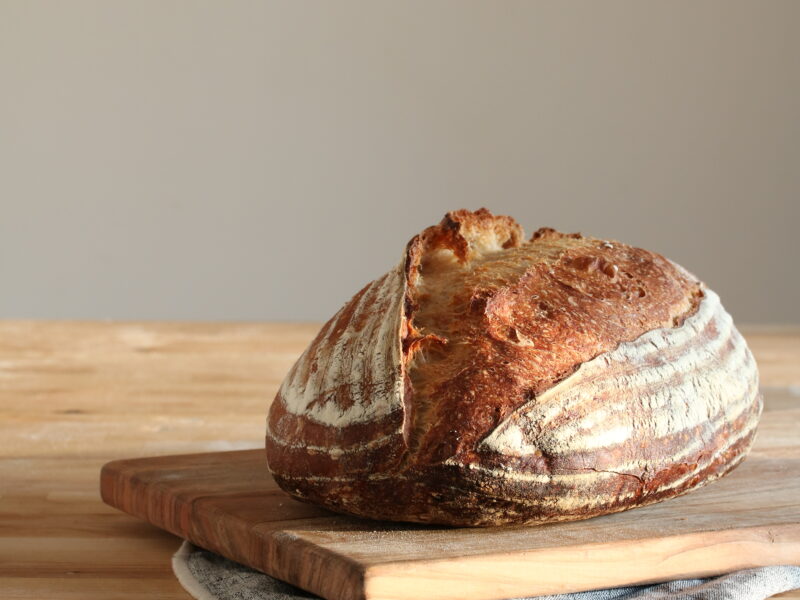

Hi, when is the next sourdough online baking course?
Currently you can sign up to the online course at any time. The course includes access to our online sourdough community exclusive support and guidance as well.
https://spiceandzest.com/product/sourdough-baking-for-beginners/
I will be away from home for over 1 month.
What should I do to ensure that the starter will be in good condition for baking once I return and plan to resume baking?
Please let me know. Thanks very much,
Erika Srolovits
If you’ll be away for over a month, you can create a stiff starter to ensure it stays in good condition while you’re gone. A stiff starter has less water, which slows down fermentation and helps it last longer in the fridge. Here’s what you can do:Take 30g of your existing starter and mix it with 80g water and 100g flour. This creates a thicker consistency that ferments more slowly.
Leave the mixture at room temperature for 3-4 hours so the starter can begin to activate.
Cover the starter loosely (or use an airtight container if your fridge tends to dry things out) and place it in the refrigerator. The cold temperature will significantly slow down its activity.
When You Return:
Remove the starter from the fridge. It may have some liquid on top (hooch); this is normal. Pour it off, Discard most of the starter, keeping about 1-2 tablespoons, and give it a feeding
Repeat feedings 2-3 times over a couple of days until it regains its strength and becomes bubbly and active again.
Thank you so much! Just a quick follow-up question. What would be the proportion of water and flour to the 1-2 tablespoons of starter to reactivate?
Thanks again!!
Have a beautiful Shabbos!